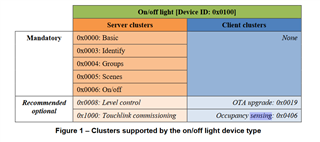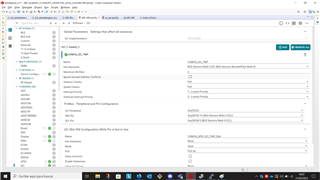Other Parts Discussed in Thread: Z-STACK
Hello everyone, I have a LAUNCHXL-CC26X2R1 acting as a coordinator, an OSRAM light bulb an d6t-8l temperature sensor which I want to use as a ocupancy sensor and uses I2C to connect to the coordinator. I started with the project Zigbee Coordinator Switch and I am able to toggle the light from the CUI. Then, I added the temperature sensor code to the project and created a new option in the menu. So by now, I am able to read the temperature from the sensor too.
The next step is to toggle the light automatically depending on the output of the temperature sensor. Can be done with this setup? I do not know if I just can add the cluster options for the temperature sensor and it will work or I need to change this setup or add another launchpad... The temperature sensor can be used as a zed device even when is connected with I2C, right?
I am following "Designing a Custom Zigbee 3.0-Certifiable Product Using SampleApp" but I want to be sure if temperature sensor + light bulb can be connected with a coordinator and make it work.
Thank you.






